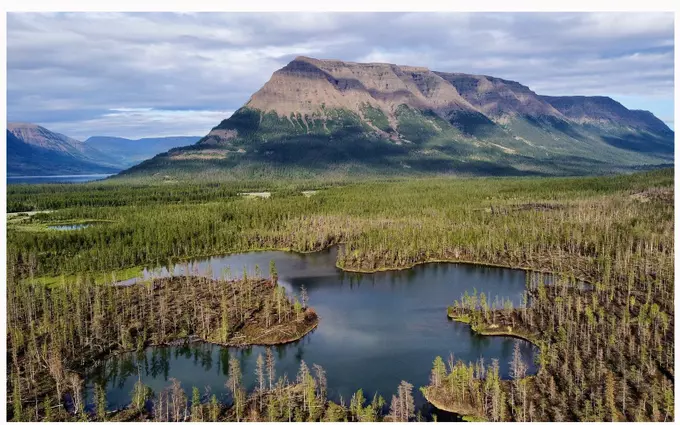
The researchers described the species composition of crustaceans inhabiting the reservoirs of the Putorana Plateau, a unique mountain range in Central Siberia that is difficult to study. The authors determined the patterns of their distribution, and discovered 23 new taxa for the region, and 4 new for science. The results of the work, supported by a grant from the Russian Science Foundation (RSF) and published in the journal Diversity, will be invaluable for preserving the region’s unusually rich fauna for the Arctic, which is so vulnerable to human influence and global climate change.
The Arctic ecosystems are characterized by a relatively poor species diversity - the conditions are harsh, and therefore only the strongest and fittest, more precisely, the most specialized, can survive. This makes organisms very sensitive to global warming and the impact of human activity, since even a slight change in the usual environmental conditions can disrupt vital metabolic processes. “Unfortunately, many Arctic regions are difficult to access, and therefore we know very little about the species inhabiting them. This is especially true for aquatic animals: a small puddle in a cave or a stream high in the mountains may be the only habitat for representatives of some taxon. It is here that we constantly find new species or even groups higher in the systematic hierarchy. Some of them may be relics - a kind of "time travelers" preserved from ancient times. By studying them, we can learn a lot about the origin and evolution of various organisms,” says Elena Chertoprud, candidate of biological sciences, researcher at the IEE RAS and the Faculty of Biology of Moscow State University.
In their new work, researchers from the A.N. Severtsov IEE RAS (Moscow), M.V. Lomonosov Moscow State University (Moscow), Kazan Federal University (Kazan), the Institute of Biology of the Komi Scientific Center of the Ural Branch of the Russian Academy of Sciences (Syktyvkar) and the All-Russian Research Institute of Fisheries and Oceanography (Moscow) focused on studying the water bodies of the Putorana Plateau. This mountain range of volcanic origin is located beyond the Arctic Circle, and most of it is characterized by a harsh, sharply continental climate. However, due to the peculiarities of the relief in some lake valleys, conditions are much more favorable, including for the aquatic animals inhabiting them.
The authors studied 30 reservoirs of various sizes and origins on the Putorana Plateau. Among them were low-flowing lakes, preserved due to runoff or formed during the expansion of the stream and channel; oxbow lakes with a permanent or dry summer connection with the riverbed; swampy lakes; endorheic lakes, including mountain lakes, lying in relief depressions. With the help of a plankton net, hydrobiologists caught representatives of zooplankton moving in the water column, and in bottom sediments - meiobenthic organisms inhabiting the soil.
Scientists managed to collect 36 species of Cladocera (the so-called water fleas or cladocerans) and 24 species of Copepoda (copepods). Interestingly, 23 of the discovered taxa are new to the region, and four are new to science. The species richness of Copepoda turned out to be higher in the central part and on the western slopes of the plateau compared to the foothills, while the number of Cladocera species, on the contrary, decreases in mountainous areas. For the meiobenthos, the type of feeding of the reservoir turned out to be critical, but the height of its location had almost no effect. For planktonic animals, the size of the reservoir and, to a lesser extent, the species composition of macrophytes - aquatic plants in which they can hide and hunt - held higher importance.
“The fauna of microcrustaceans in the northern part of Central Siberia in general and the Putorana Plateau in particular is characterized by high species richness and differs significantly from that of both the western and eastern regions of the continental Arctic. The specificity is due to the climatic features of Central Siberia, as well as the preservation of the relict Pleistocene fauna in refugia, that is, a kind of refuge that did not undergo the last glaciation, ”explains Anna Novichkova, PhD in Biology, researcher at the IEE RAS and the Faculty of Biology of Moscow State University.
Studies of aquatic communities in the north of Central Siberia, which is one of the most remote regions of Russia, are important both for revising the species richness of the Arctic fauna and for assessing the variability of polar ecosystems against the backdrop of growing anthropogenic pressure and global climate change. This, in turn, is of key importance for understanding the processes of transformation of natural ecosystems, as well as for developing scientifically based methods and schemes for monitoring the state of the aquatic environment.
